The Vasari Corridor, a major cultural and historic landmark in Florence, re-opened a few months ago, after an eight-year, $11 million restoration.
It’s an aerial passageway connecting the Palazzo Vecchio and the Palazzo Pitti. But why is it there? The story of this unique corridor begins with a wedding.
Johanna of Austria was the last child of Queen Anna of Germany, Hungary and Bohemia, and Ferdinand I of the Habsburg dynasty who ruled as Holy Roman Emperor.
Francesco I de’ Medici was the first-born son of Eleonora di Toledo and Cosimo I de Medici, Duchess and Duke of Florence.
Johanna and Francesco were betrothed to unify the Habsburg and Medici dynasties.
This was not just a political exchange, it also encouraged a cultural and artistic exchange between the Habsburg and Medici, between Tuscany and the Holy Roman Empire.
Their wedding was scheduled for December 1565, and in March of that year, Duke Cosimo commissioned his favorite architect, Giorgio Vasari, to build what we now call The Vasari Corridor.
Ordered to finish it in time for the wedding, Vasari and his workers completed this unique-in-the-world aerial corridor in nine months. According to Francesca Funis, a professor at the University of Perugia, the legend that it took only five month is not correct. If it was nine, which sounds more plausible, it also sounds like it was completed in the nick of time.
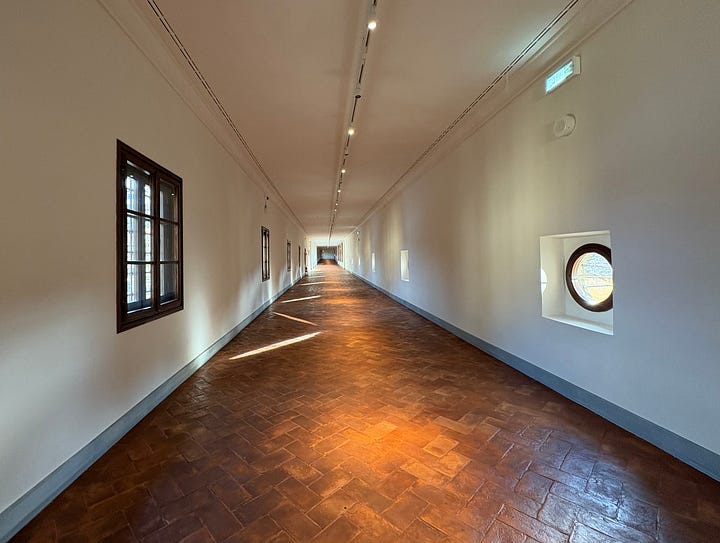
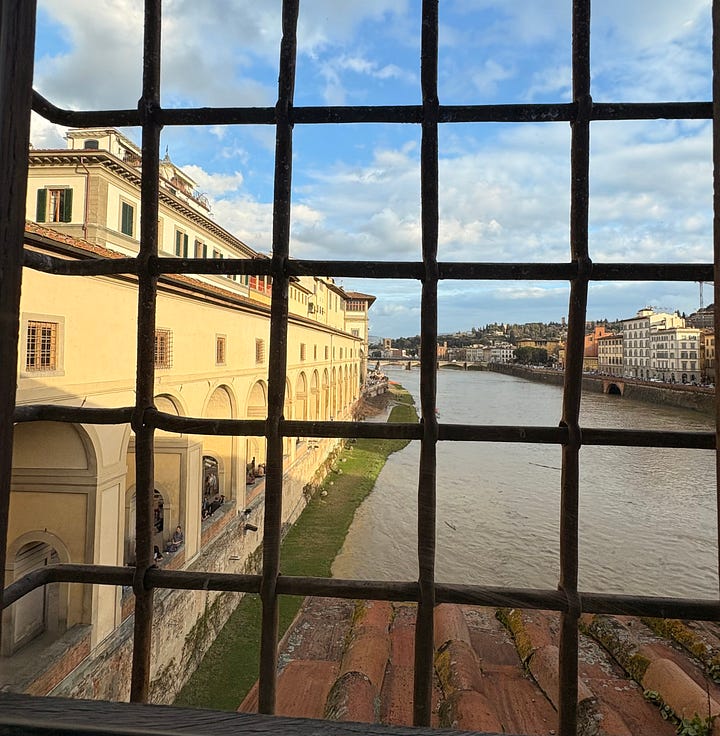
Its primary purpose was to allow the Medici family to pass safely from their home in the Palazzo Pitti to the seat of government in the Palazzo Vecchio. But it’s also about Cosimo’s power over his subjects. The Republic had been vanquished and authoritarian rule had taken its place. The corridor allowed Cosimo and his family to walk above the citizens. Separate and private.
Why the push to complete it in time for the wedding? To impress the Habsburg guests. Indeed, the nuptial celebrations were among the most dazzling the city had produced.
The union, however, was not a happy one. Joanna was homesick, unloved by Francesco and generally disliked by Florentines, although her father-in-law, Cosimo extended some efforts to make her feel at home such as commissioning murals of Habsburg Empire cities to be painted in the courtyard of the Palazzo Vecchio.
Pro Tip: You can pop into this courtyard anytime, no ticket necessary, and have a look below the lunettes, to view the scenes of cities such as Prague, Graz, Linz, Bratislava, Vienna, Innsbruck, Constance, and more.
When I went through the corridor in the 1980s as a 20-year-old student, it still contained hundreds of portrait paintings (now removed) dating from the 17th and 18th centuries. Back then, safety rules were lax. However, to allow visitors through the corridor in today’s world, safety measures were taken with the recent renovation, such as adding emergency exits. An air conditioning system and disability access were also added.
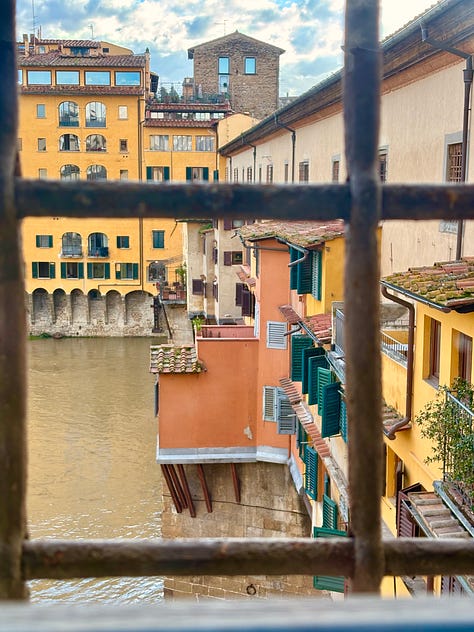
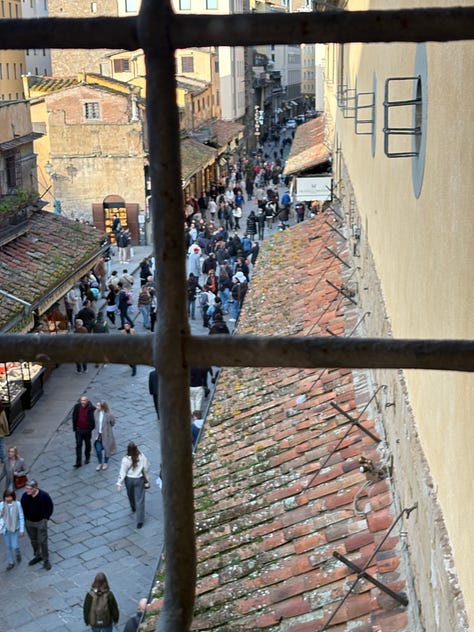
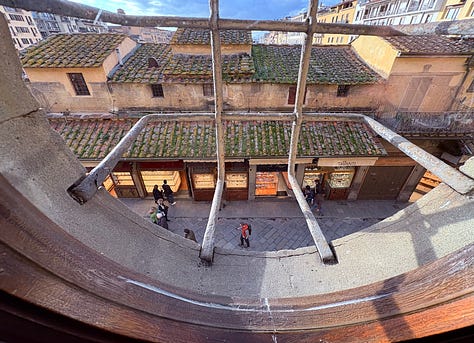
In another instance of an Italian leader wanting to impress a foreign visitor of high rank with the Vasari Corridor, Mussolini took his “special guest” through it in May of 1938.
You can see from the image below who the guest was. This was seen as a highly important event, leading to the “Pact of Steel” between Italy and Germany. In this image the two leaders are driving past the side of Santa Croce Church.
I recently checked out this new version of the corridor and enjoyed the rarely seen views over the Ponte Vecchio. It is suggestivo as the Italians say, to imagine Eleonora and Cosimo passing through here as you do the same. And if you pause halfway, at the panoramic windows, it is eerie to know that Hitler and Mussolini stood in this same place—Hitler duly impressed as Mussolini hoped he’d be.
Should you visit the Vasari Corridor? If you're a fan of architecture and of unusual things to do in cities—then it’s worth adding to your itinerary. While the portraits may be gone, the experience still offers a distinctive vantage point over the river.
I’d love to guide you through this fascinating part of the city’s history. Sign up for my Uffizi tour and we can add a ticket to the corridor for a one-of-a-kind Florentine experience.
Here’s a clip of me talking about the Vasari Corridor from my online 7-week class on the Florentine Renaissance.


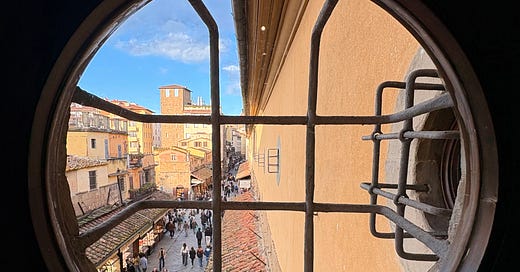





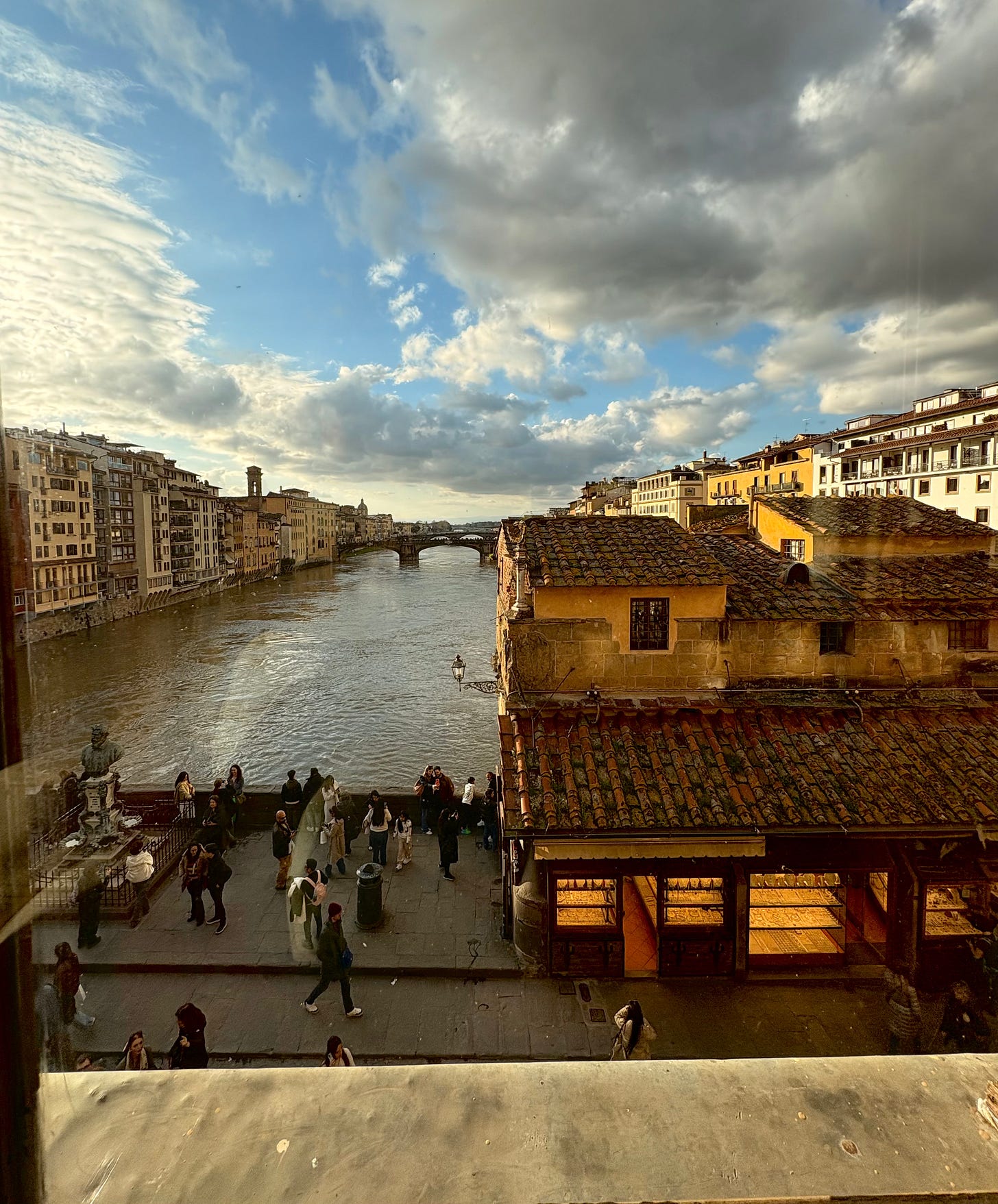
Thanks for the restack @Gabi of Journey Jots 😀
Last November when we were in Florence, the Vasari Corridor was closed again. I hope it is now open for your next trip. Thanks for a great post.
Your readers may want to ready my substack on Vasari and the Boys for a bit of history and humor about the Duomo Museum.
https://open.substack.com/pub/michelletoohey/p/vasari-and-the-boys?r=3mru5p&utm_campaign=post&utm_medium=web&showWelcomeOnShare=true
or go to Soft Contacts with the Wonders of the World. michelletoohey.substack.com